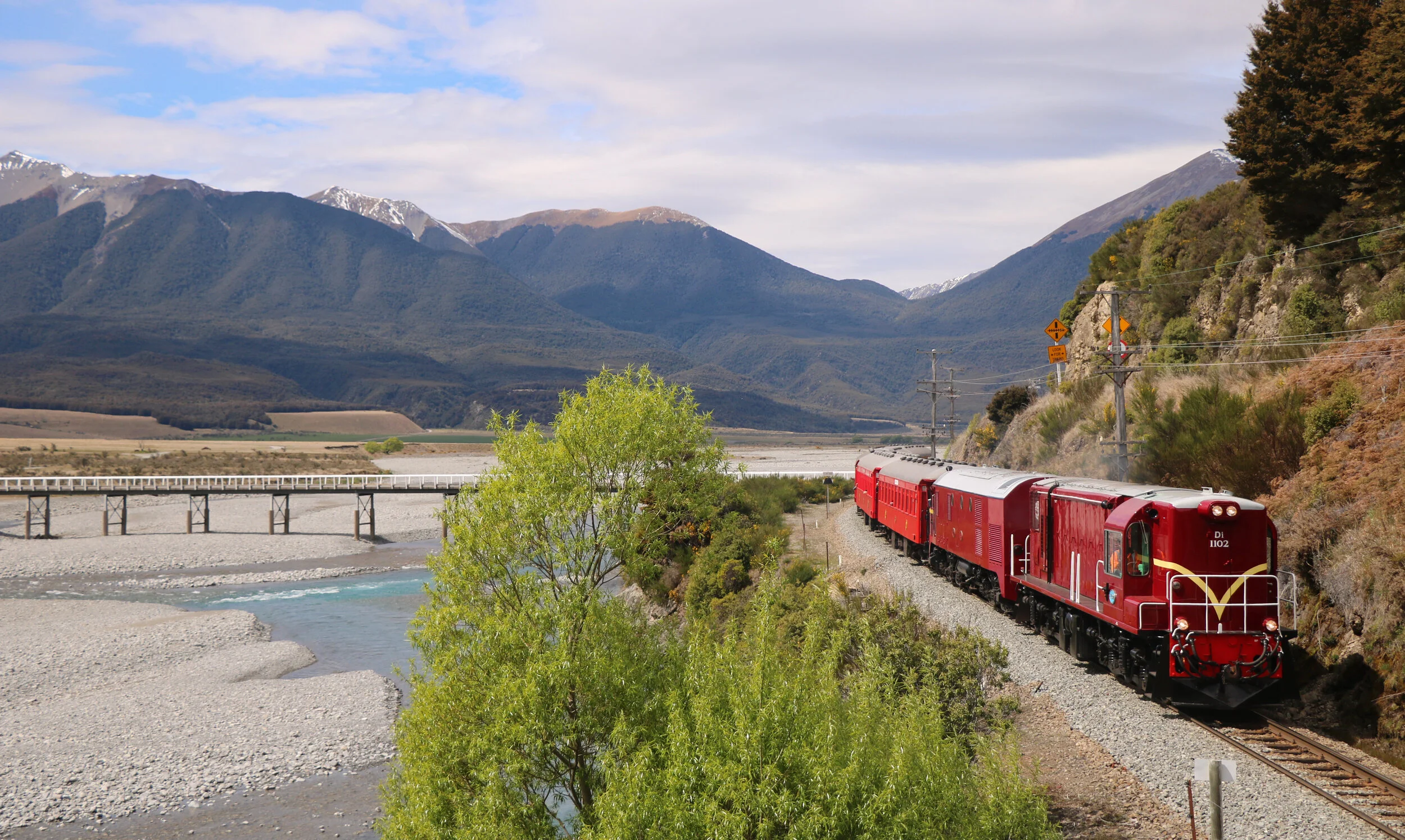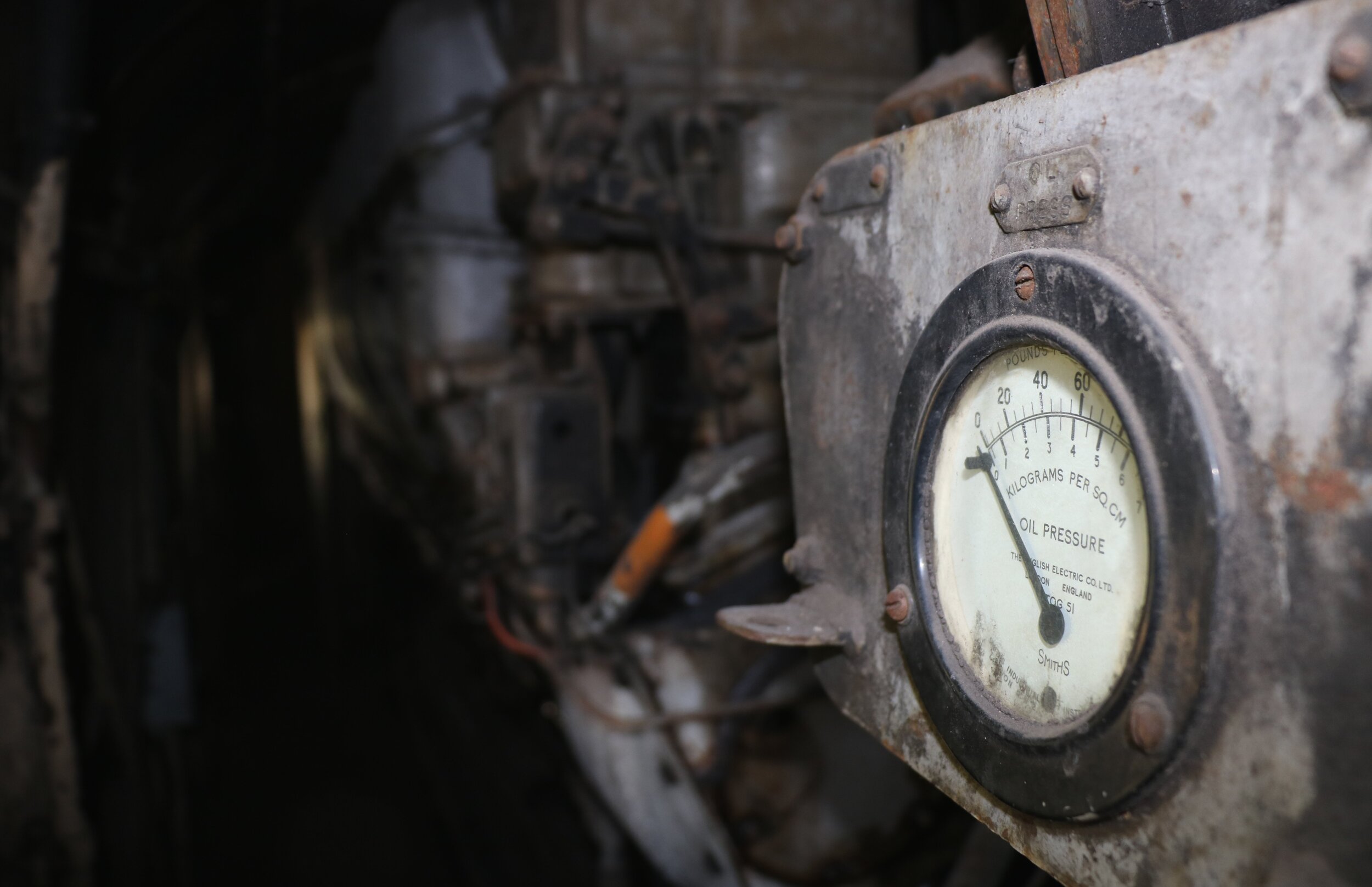Built: 1966, English Electric Company Ltd at Rocklea Works, Queensland, Australia.
Wheel Arrangement: Co - Co
Weight: 64 tonnes
Maximum Speed: 97kmh
Fuel Capacity: 500 imp gallons (2,300 Litres)
Traction Motors: Six EE540/1A
Continuous Tractive Effort: 132kN
Diesel Engine: English Electric 6CSRKT Mark 2
Turbocharged and Intercooled Four Stroke, 6 cylinder, four valves per cylinder, 10 inch bore, 12 inch stroke. 92 litre (5615 Cubic Inches) total capacity.
RPM Range: 450 - 850rpm
Power Output: 1012HP
Withdrawn: 1989
Di 1102, was one of five of its very small class built by the Australian branch of the English Electric Co. in Rocklea Works, Brisbane for the New Zealand Railways. The class was to be the prototype for a lightweight diesel electric locomotive to run not only on main lines, but also on lightly laid branchlines, more so in the South Island. However, the introduction of the 64 members of the Mitsubishi Dj class in 1968 took over this role and as a result the Di class remained as a small group of 5.
1102 and its class mates operated all over the country during their working lives, they worked over the East Coast Main Trunk in the Bay of Plenty from 1969 until 1978 when the Kaimai tunnel was opened. Subsequently they were transferred to the Dunedin area to work the Makareao stone trains and work over the Otago Central Branch and down to Invercargill. The class ended up finishing their days in the Wellington & Napier areas, with 1102, now carrying its TMS identity of 1820 being the last withdrawn in May 1989.
DI 1820 was purchased by the group in 1990, and was finally transferred to our site at Ferrymead in September 1992. Attention to the locomotive’s long restoration project began in 2009 following the recent completion of Dg 772, with the aim to restore it to network standards. With the locomotive found to be in a very run-down state, and having been involved in a couple of major accidents during its NZR career, this has had to be the most extensive locomotive restoration project we have undertaken in all our years in existence. In October 2017, the locomotive was fired up & moved under its own power for the first time in almost 30 years, and so began the next year of finishing up the restoration project.
The locomotive was recommissioned during Easter weekend 2018 on the Ferrymead Railway, wearing its original ‘out of the box’ colors from 1966 and re-numbered back to 1102. In July that year, it was sent up to the Weka Pass Railway at Waipara to test out the locomotive’s performance hauling a variety of loads and was signed off and registered to work on the national network in September, marking the completion of its 9 year restoration.
In October 2018, it made its mainline debut in preservation with Dg 772 hauling Steam Incorporated’s “Southern Diesel Railtour” that traveled from Christchurch to Arthur’s Pass, Oamaru, Dunedin, Middlemarch & Invercargill which coincided with Dunedin Railways’ 50th birthday celebrations of the Dj class. As of August 2023, Di 1102 has done over 5000km’s since being restored, and is now on lease to the Weka Pass Railway at Waipara, the locomotive is also currently awaiting engineering work that is required to return the locomotive to the national network. Once re-certified, Di 1102 will continue to be based at Waipara and be available for mainline charters & excursions!

































